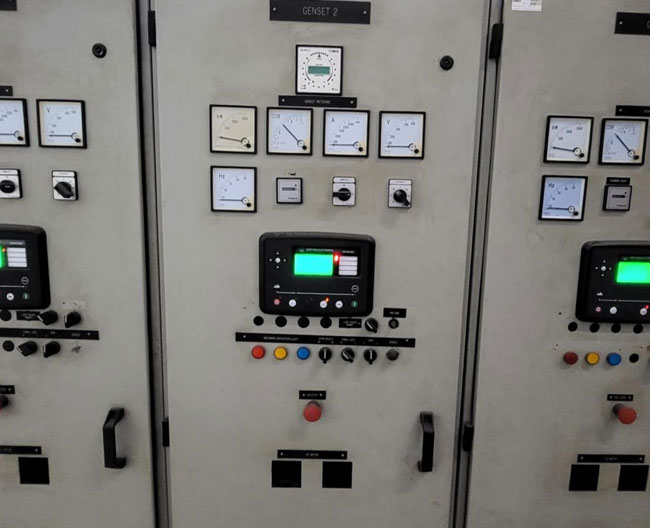Synchronize Panel
A Synchronize Panel Service typically refers to the maintenance, repair, or operation of a synchronizing panel used in electrical systems, particularly in power generation, distribution, or industrial setups where multiple generators or power sources need to be synchronized to operate in harmony. These panels ensure that all power sources (generators, alternators, etc.) are operating at the same frequency, voltage, and phase before being connected to a common bus or grid.
Here’s a breakdown of what service for a Synchronizing Panel entails:
1. Inspection and Diagnostics:
- Visual Inspections: Checking for visible signs of wear, corrosion, or damage to components such as switches, displays, and wiring.
- Diagnostic Testing: Using tools to test the synchronizing panel’s functionality, ensuring the system is performing as expected under different load conditions.
- Control Circuit Checks: Ensuring that the automatic synchronization mechanisms (voltage, frequency, and phase matching) are functioning correctly.
2. Routine Maintenance:
- Calibration of Meters: Ensuring that the voltage, frequency, and current meters are accurately displaying the values.
- Cleaning: Dust, dirt, and contaminants can affect the panel’s sensors and switches, so routine cleaning helps maintain its efficiency.
- Oil and Lubrication: For panels with mechanical parts, lubrication of moving parts (such as relays or switches) is necessary to avoid wear and ensure smooth operation.
3. Repair and Troubleshooting:
- Fault Diagnosis: Identifying and fixing problems such as incorrect synchronizing (where two or more generators fail to align properly in terms of frequency, voltage, or phase).
- Component Replacement: Replacing faulty components such as the synchronizing relays, voltage regulators, or any damaged electrical parts.
- System Reset: In cases where there’s an operational failure or a system lock-up, the synchronizing panel may require a reset to restore normal function.
4. Software and Control System Updates:
- Firmware Updates: Some modern synchronizing panels include digital control systems. Regular updates to the panel’s software or firmware may be required for improved efficiency or new features.
- System Integration Checks: Ensuring that the panel is properly integrated with other control systems, such as generator controllers or remote monitoring systems.
5. Testing and Verification:
- Load Testing: Verifying that the panel works under full load conditions, ensuring that generators synchronize correctly before being connected to the grid.
- Simulating Fault Conditions: Simulating faults to ensure that the panel reacts appropriately (e.g., disconnecting the generators to prevent damage when synchronization fails).
- Verification of Synchronization Functionality: Ensuring that the panel maintains synchronization even during load changes, system disturbances, or external grid fluctuations.
6. Emergency Service:
- 24/7 Emergency Support: In case of system failures or operational discrepancies, providing immediate support to restore synchronization.
- Power Outage Support: For critical applications (such as hospitals or industrial plants), ensuring that backup power sources remain synchronized to avoid disruptions.
7. Upgrades and Optimization:
- System Upgrades: Replacing outdated synchronization equipment with modern technology to improve efficiency and reliability.
- Optimization: Ensuring the synchronization process is as efficient as possible, which can include fine-tuning parameters, improving response times, and increasing system stability.
Why Synchronizing Panel Maintenance Is Important:
- System Stability: Properly synchronized power sources ensure a stable and reliable power supply, reducing the risk of blackouts or equipment damage.
- Extended Equipment Life: Regular service and calibration can extend the life of both the synchronizing panel and the generators being synchronized.
- Safety: Synchronization issues can lead to dangerous electrical faults or overloads, so regular service is crucial to maintaining a safe system.
If you’re working with a specific brand or type of synchronizing panel, service procedures might vary, so let me know if you need more tailored details!


